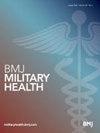Management of war-related facial wounds in Ukraine: the Lviv military hospital experience.
IF 1.4
4区 医学
Q2 MEDICINE, GENERAL & INTERNAL
引用次数: 0
Abstract
The Lviv Military Medical Centre is the main hospital responsible for the management of wounded military personnel in Western Ukraine. Since the full-scale invasion of our country in 2022, we have had to rapidly adapt our department to managing a large influx of complex facial battle injuries. These wounds are generally from large explosive fragments such as from shells and commonly produce avulsive defects of the facial bones and overlying soft tissues. Using representative cases, we aim to discuss management of these extensive injuries and guide the future direction of our service, particularly in surgical training such as microvascular anastomosis.
乌克兰与战争有关的面部创伤管理:利沃夫军医院的经验。
利沃夫军事医疗中心是负责管理乌克兰西部受伤军人的主要医院。自 2022 年我国遭到全面入侵以来,我们必须迅速调整我们的部门,以处理大量涌入的复杂面部战伤。这些伤口一般来自炮弹等大型爆炸物碎片,通常会造成面部骨骼和覆盖软组织的撕脱性缺损。我们旨在通过具有代表性的病例,讨论这些大面积损伤的处理方法,并指导我们未来的服务方向,特别是在微血管吻合术等外科培训方面。
本文章由计算机程序翻译,如有差异,请以英文原文为准。
求助全文
约1分钟内获得全文
求助全文

 求助内容:
求助内容: 应助结果提醒方式:
应助结果提醒方式:


